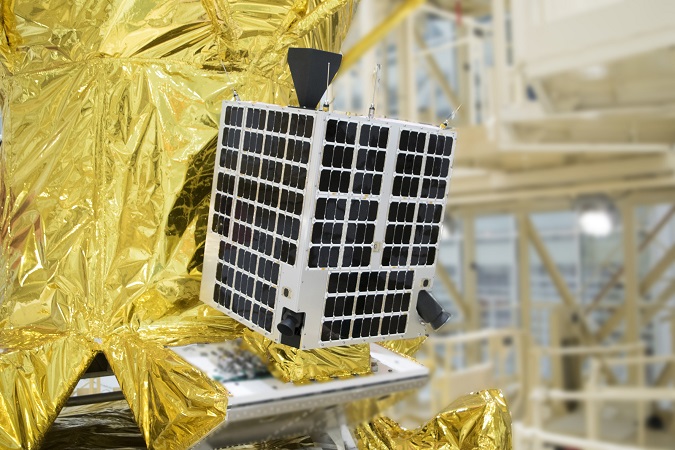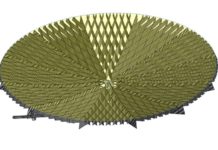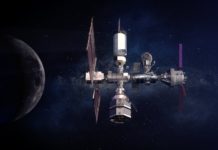On December 27th 2018 at 11:07 JST (02:07 UTC), the microsatellite GRUS, developed by Japanese startup Axelspace Corporation, was successfully orbited. The launch took place from Russia’s Vostochny Cosmodrome using the Soyuz-2.1a launch vehicle, with Russia’s Kanopus-V-5/6 remote sensing satellite as its main payload and with 26 piggyback satellites. Axelspace has confirmed that GRUS has been located and tested, and is performing basic operations as expected.
The 100 kg GRUS satellite is the first satellite Axelspace has launched for AxelGlobe, a planned Earth imaging constellation that will be able to provide a global daily revisit rate. Axelspace plans to launch two more GRUS satellites in 2020, and then further increase the number to a maximum to 50 satellites, to achieve the completion of the AxelGlobe constellation by 2022.
Developed in-house by Axelspace, GRUS will be able to provide a panchromatic resolution of 2.5m and a multispectral resolution of 5m, and has a design life of over 5 years. It has been launched into a 600km Sun Synchronous Orbit, where it will be able to provide daily revisit rates for up to 40° off-nadir angle, and 7-day revisit rates up to 5° off-nadir angle.
Earlier this month, Axelspace announced having raised US$22.8m investment in its Series B funding round, giving it a total of approximately US$40m funding to date. On January 17 2019, Axelspace will launch another satellite, RAPIS-1, for Japan’s space agency JAXA. This is a satellite built specifically for JAXA, and is significant for being the first JAXA satellite to be developed by a startup.
Founded in 2008, Axelspace has so far launched has launched three Earth observation satellites – WNISAT-1 (10kg, launched in 2013 and currently in extended operation in orbit); WNITSAT-1R (43kg, launched in 2017 and currently operational); and Hodoyoshi-1 (60kg, launched in 2014, and currently operational), developed in cooperation with the Next-generation Space Systems Technology Research Association (NESTRA).







